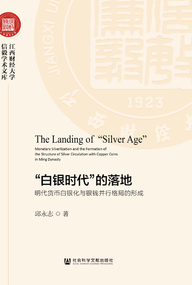Exploring the silver age of the Ming Dynasty

The Landing of “Silver Age”
There is no disagreement in academic circles that it was silver that evolved as the main currency in the Ming Dynasty (1368–1644). For this fact, some scholars call it silver monetization, and others call it currency “silverization.” The two similar expressions actually contain huge differences in understanding. The former argument believes that although silver has long had some monetary functions, it did not achieve its full monetary status until the middle of the Ming Dynasty. The latter statement puts forward that the use of silver currency completed the monetization process long before the Ming Dynasty. It was the currency silverization happening in the Ming Dynasty, namely, silver replacing baochao (the official banknotes at that time) and copper coins and becoming the dominant currency.
From the perspectives of monetary theory and historical fact, the author argues that purely focusing on silver monetization in the Ming Dynasty ignores the reality that silver had already developed into an important currency during the Song, Jin and Yuan dynasties. Therefore, it is more realistic to use the concept “currency silverization” for the Ming Dynasty. The author holds that silver in the Song, Jin and Yuan dynasties not only completed the process of monetization, but also played an increasingly prominent role as a kind of currency, which laid a solid historical foundation for the development of currency silverization in the Ming Dynasty.
Historical changes are usually the result of interaction between inevitability and chance. Although the currency status of silver in the Jin and Yuan period continued to increase, this does not mean that it would necessarily develop linearly into a major currency in the Ming Dynasty. For a long time, scholars have explored the motives and mechanisms of currency silverization in the Ming Dynasty. The author divides proposed reasons for the change into three categories: facilitation of the fiscal system, market need and the disorder of the monetary system. The author believes that these views are reasonable to some degree. However, they are still full of misunderstandings and miss key points.
In this book, the author argues that the Ming’s inheritance and transformation of the various social and economic systems of the Yuan Dynasty (1271–1368) reconstructed the relationship between government and market. Under this context, the monetary system and the economic system during the reign of Zhu Yuanzhang (1368–98) seriously impacted the institutional foundation and credit of copper coins and banknotes, the two official currencies at that time. With the vigorous development of market power, their currency dominance irretrievably declined. This was the fundamental reason why the currency in the Ming Dynasty changed to silver.
edited by YANG LANLAN
